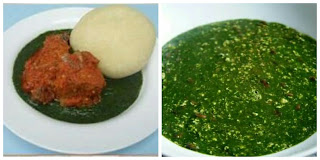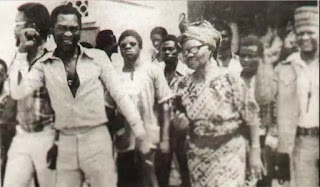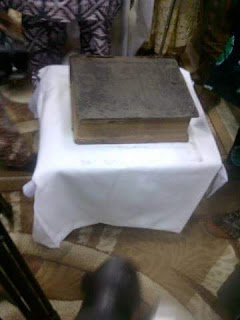Saturday, 18 November 2017
Sunday, 12 November 2017
Baba rẹ nke lọ bi aparo
Iwọ na n bẹ lọ bi igala
Omi ireke l’ẹ n bu s'ebẹ
L’ẹ n bu S'e bẹ l’ẹtun fi n r’ọmọ.
Before their disappearance, people had started living with them.
Saturday, 4 November 2017
received honorary degrees and awards from many higher institutions of learning which included the University of London and got offers from foreign labels.
Saturday, 21 October 2017
Sunday, 24 September 2017
Wednesday, 13 September 2017
After the demise of His Royal Highness, Ọba Samuel Oyebade Adeluọla Ishọla Mofọlọrunshọ Lipẹde, Ọmọ Erinjogunọla, Ara Erunwọn, Ọkọ Alhaja Wosilat on the 3rd of February, 2005 - after he spent 33 years on the throne at the age of 90 years - Ọba Micheal Adedọtun Arẹmu Gbadebọ from Laarun Ruling House emerged six month later as the 10th Alake of Egbaland as he scored 15 out of 23 votes in a transparent election conducted by the Afọbajẹs, the King-makers. He defeated 10 contenders who had applied for the Obaship with the Application letters and Curriculum vitaé included his younger brother, Adeleke Gbadebọ.
The then Ogun State governor, Otunba Gbenga Daniel wrote a letter after 21 days to confirm Ọba Micheal Adedọtun Arẹmu Gbadebọ as Alake of Egbaland.
Unlike his grandfather, the 6th Alake who married 24 wives and his father who married 3 wives, Alake Ẹgba, Ọba Adedọtun Arẹmu Gbadebọ married only Dr. Tokunbo Gbadebọ, the daughter of the famous publisher and Yoruba author, Joseph Fọlọrunshọ Ọdunjọ, J.F. Odunjọ popularly known as Alawiye.
Ọba Adedọtun Gbadebọ was born on the 14th of September, 1943. He attended St. Augustine’s Roman Catholic Mission (RCM) School, Itẹsi, Abeokuta in 1949. He also attended Baptist Boys’ High School (BBHS), Oke-Ekunya, Abeokuta in 1957. He did his Higher School Certificate course at the Ibadan Grammar School, Ibadan, Oyo state, and proceeded to University of Ibadan in 1965 to obtain Bachelor of Arts degree in 1969.
He joined the Nigerian army in 1969, and attended the Command and Staff College, Jaji in Igabi Local Government Area of Kaduna State,
from September, 1978 to August 1979.
Ọkọ Tokunbọ, Tokunbo's husband became a Principal Staff Officer to the Chief of Staff,
Major-General Abdul-Baki Tunde Idiagbon at the Supreme Military Headquarters, Dodan Barracks, Lagos State from January 1984 to September 1985. He retired from the Nigerian army as a Colonel together with General Muhammadu Buhari and Tunde Idiagbon. Muhammadu Buhari was number one on the list of those Soldiers retired then by the military government, Tunde Idiagbon was number two, Magoro, number three while Ọba Adedọtun Gbadebọ was number 14 on that retirement list.
Ọba Adedọtun Gbadebọ has been on the throne as the 30th but 10th Alake of Egbaland that reigned since August 2nd, 2005.
from September, 1978 to August 1979.
Major-General Abdul-Baki Tunde Idiagbon at the Supreme Military Headquarters, Dodan Barracks, Lagos State from January 1984 to September 1985. He retired from the Nigerian army as a Colonel together with General Muhammadu Buhari and Tunde Idiagbon. Muhammadu Buhari was number one on the list of those Soldiers retired then by the military government, Tunde Idiagbon was number two, Magoro, number three while Ọba Adedọtun Gbadebọ was number 14 on that retirement list.
Sunday, 3 September 2017
Saturday, 26 August 2017
Tuesday, 22 August 2017
Ibẹ l'agbe bi mi o,
Ibẹ l'agbe tọ mi d'agba oo Ilẹ ominira
Maa yọ, maa yọ, maa yọo, l'ori Olumọ,
N o gbe ọ l'eke ọkan mi bii ilu odo ọya,
Emi o f'Abẹokuta s'ogo N o duro l'ori Olumọ,
Maayọ l'orukọ Egba ooo Emi omọọ Lisabi.
Maa yọ, maa yọ, maa yọo, l'Ori Olumọ,
Emi o s'ogoo yi l'ọkan mi Wipe ilu olokiki o L'awa Ẹgba n gbe
Maa yọ, maa yọ, maa yọo, l'Ori Olumọ,
Monday, 21 August 2017
(O maa daa omi Ooyọ yẹn ni si ori INA).
Saturday, 19 August 2017
Mrs. Funmilayo Ransome-Kuti was the first female student who was admitted into Abeokuta Grammar School, the school was then located directly opposite her family house at Isale-Igbein in Abeokuta. She also went to England for further studies. After, She returned to become a teacher and activist in Nigeria.
she pleaded “not guilty”, Ẹjọ Ku s'Ake.....the case ended.
Wednesday, 16 August 2017
Sunday, 13 August 2017
Saturday, 12 August 2017
King Ghezo' son and his successor, Glele planned to attack Egbas in 1863, so as to avenge the defeat.
Egba and Owu joint army intelligence quickly foretold and leaked the planned attack. The Egba soldiers led by Owu warrior, Akindele Gbalefa laid ambush for the Dahomeans on the outskirts of Abeokuta, Lagos - Abeokuta boundary now called Gbalefa Peninsula.
Sunday, 16 April 2017
The histories and records of founding of the Egbas are incomplete until the mention of some historical relics.
To discuss Egba, without Olumo Rock may amount to disservice to history, hardly would an historian who deserves accolades would recount the evolution of the modern day Egba without homage to Lisabi, Agbongbo Akala, Sodeke and Others for been gallant warriors who led their people during one turbulent epoch or the others.
The same phenomenon brought to bear the very epitaphic cenotaph of the greatest warriors of Egba land in the ITOKU CENOTAPH.
Itoku Cenotaph was unveiled on Monday, 27th of October,1930 to immortalize the great warriors of Egbaland, who included Lisabi Agbongbo Akala, Sodeke and Others. Oba Ladapo Samuel Ademola also
known as Ademola II was the Alake of
Abeokuta who commissioned the Cenotaph In 1930. He reigned as Alake between 1920 to 1962.


























































